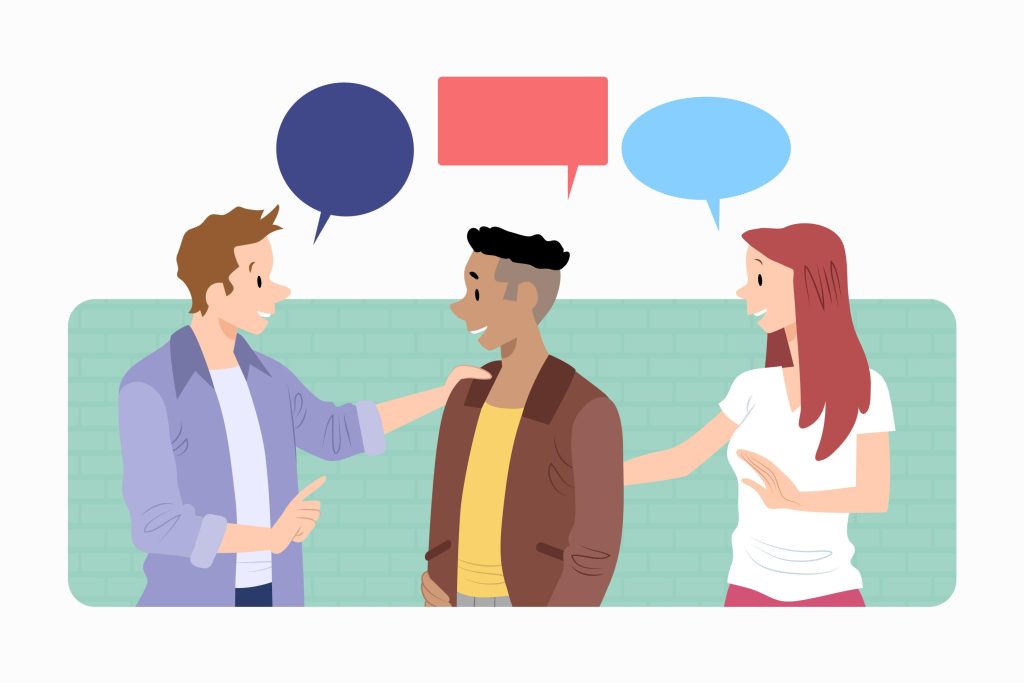Why You Should Treat Notes Like Conversations
Jessica White July 24, 2025
Most people take notes as static records—bullet points, lists, or mindless transcripts. But what if there’s a better way? The latest trend in productivity is to treat notes like conversations, not just cold data storage. This approach transforms note-taking into a dynamic, interactive process that improves creativity, focus, and understanding.
From digital tools to cognitive science, there’s growing support for conversational note-taking. It’s not about talking to yourself—it’s about engaging with your thoughts actively, much like you would with another person. Let’s explore why this matters and how it can reshape the way you think, learn, and create.

The Problem With Traditional Note-Taking
For years, notes have been treated as passive data capture. You write something down during a meeting or lecture and never return to it. This linear method leads to information decay—your notes sit idle, unused, and forgotten.
Cognitive scientists refer to this as “passive rehearsal”, which is ineffective for long-term memory or critical thinking. Simply writing things down isn’t enough. To make notes truly useful, you need to interact with them—just like you would in a conversation.
Emerging Trend: Conversational Note-Taking
A growing movement among creators and thinkers is promoting conversational note-taking. Here’s how it works:
- You ask questions in your notes.
- You respond to previous notes with updates or counterpoints.
- You treat your notes as if you’re having an ongoing dialogue with yourself.
This approach mirrors Socratic questioning, where understanding is built through inquiry and reflection—not just information storage.
Tools That Help You Treat Notes Like Conversations
Digital tools are now evolving to support this trend. Here are the most notable:
1. Roam Research
Designed for networked thought, Roam allows notes to link bidirectionally. Users build daily notes, and through backlinks, these turn into an ongoing conversation thread across time.
2. Obsidian
Supports markdown notes and internal links. Users can tag and revisit thoughts, adding commentary over days or weeks—creating a living dialogue.
3. Reflect and Logseq
These apps combine journaling with knowledge management. They encourage revisiting past notes and updating them with new insights, simulating conversation and reflection.
Why You Should Treat Notes Like Conversations
1. Boosts Creativity and Idea Generation
When you respond to your own notes, you create new mental connections. This fosters creativity. According to research published in Psychological Science, elaborative rehearsal (adding new thoughts to old ones) improves insight and problem-solving.
Conversational notes force interaction, which naturally leads to idea evolution.
2. Improves Memory and Learning
Talking with your notes—asking questions, summarizing, or challenging ideas—activates active recall, a powerful memory strategy. Studies show that self-questioning strengthens retention and comprehension.
Instead of passively reading your notes, converse with them—your brain will remember more.
3. Reduces Mental Clutter
When you revisit and respond to notes, you clarify thoughts and discard irrelevant data. This reduces cognitive load, allowing you to focus on what’s important.
Daniel Levitin’s The Organized Mind (2014) emphasizes externalizing mental processes. Treating notes as conversations helps offload and organize your thoughts.
How to Start Treating Notes Like Conversations
Step 1: Ask Questions in Your Notes
After writing a note, ask:
- “Why does this matter?”
- “What do I think about this?”
- “What’s missing here?”
Questions open a loop that invites future reflection.
Step 2: Set Time to Revisit Notes
Schedule weekly review sessions to read and respond to past notes. Add commentary, insights, or disagreements. This ongoing interaction strengthens understanding.
Step 3: Use Tags or Links to Continue the Dialogue
Link related notes or use tags like #question, #thoughts, or #review. This helps you find and continue past conversations easily.
Step 4: Summarize Conversations Periodically
Create meta-notes that summarize recurring themes or debates in your notes. These become anchors for deeper projects or decisions.
Real-Life Example: Creators and Entrepreneurs
Content creators use conversational note systems to develop ideas over time. For example, a blog post starts as a question in a daily note. Over weeks, related notes expand on it. Eventually, the notes form a draft, shaped by an ongoing “conversation” with earlier ideas.
Entrepreneurs use this method to track and refine strategies, using past notes as a dialogue to challenge assumptions or spark innovation.
Science Behind Conversational Thought Capture
Why does treating notes like conversations work?
The brain’s default mode network, active during reflection and planning, thrives on mental time travel—revisiting and simulating conversations. Interacting with notes activates this network, making you a more reflective thinker and enhancing self-awareness.
Additionally, metacognition—thinking about thinking—is strengthened when you actively question and engage with your notes. This promotes deeper understanding, better retention, and improved problem-solving.
Research has also shown that dialogic thinking—where you simulate a conversation—enhances cognitive flexibility and creativity. Treating notes like dialogues taps into this same mechanism, helping you refine ideas through iterative reflection.
Potential Challenges and How to Overcome Them
- Feeling Self-Conscious: Writing responses to your notes may feel odd at first. Remember, it’s not about being “right”—it’s about engagement.
- Overcomplicating: Start simple—add a question or comment. Don’t try to create perfect dialogues.
- Tool Overload: Use one system consistently. The conversation happens in your thinking, not the tool.
The Future: AI-Powered Conversations with Notes
Emerging tools now use AI to simulate conversation. Apps like Mem.ai and Reflect suggest questions or summarize past notes, helping users interact automatically.
Expect more intelligent note systems that prompt reflection, offer counterpoints, or help track your thought evolution—enhancing the conversational dynamic.
Conclusion
Notes shouldn’t be a static archive. When you treat notes like conversations, they become active participants in your thinking process. You’ll generate better ideas, remember more, and gain clarity faster.
Start small. Ask your notes questions. Respond over time. Build a dialogue with yourself—and watch your thinking transform.
This shift isn’t just about note-taking; it’s about transforming how you engage with your own mind. By treating your notes as living, evolving discussions, you create a personal knowledge system that grows with you. Over time, you’ll notice how this practice sharpens your thinking, reveals deeper insights, and enhances your ability to act on your ideas with purpose and confidence.
Reference
- Karpicke, J. D., & Blunt, J. R. (2011). Retrieval practice produces more learning than elaborative studying with concept mapping. Science, https://doi.org
- King, A. (1992). Facilitating elaborative learning through guided student-generated questioning. Educational Psychologist, 27(1), 111–126. https://doi.org
- Andrews-Hanna, J. R., Smallwood, J., & Spreng, R. N. (2014). Annals of the New York Academy of Sciences, 1316(1), 29–52. https://doi.org







